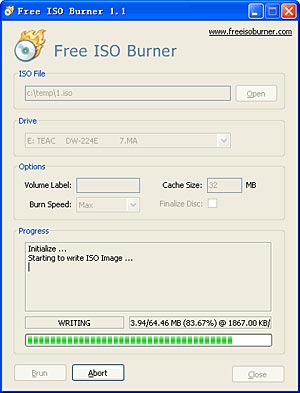
Free ISO image Burner
An ISO image is an archive file of an optical disc, a type of disk image composed of the data contents of every written sector of an optical disc, including the optical disc file system. The name ISO is taken from the ISO 9660 file system used with CD-ROM media. ISO image files usually have a file extension of .iso. ISO images are uncompressed and do not use a particular container format; they are a sector-by-sector copy of the data on an optical disc, stored inside a binary file.
ISO images can be created from optical discs by disk imaging software, from a collection of files by optical disc authoring software, or from a different disk image file by means of conversion. Software distributed on bootable discs (fox exampe Linux Debian) is often available for download in ISO image format.
ISO burner
To burn an ISO image to a CD or DVD, you need a disc image burner software. There are several such tools available. I use Free ISO Burner from SoftSea. This program is very simple and easy to use and hide all complex settings. The current version is 1.2, released on January 10, 2011.
